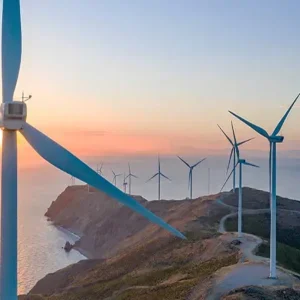
Global offshore wind power capacity will surge from 29.1 gigawatts (GW) at the end of 2019 to more than 234GW by 2030.
That is according to findings from the Global Wind Energy Council (GWEC), which claims the rise in capacity will be led by “exponential growth in the Asia-Pacific region and continued strong growth in Europe”.
The analysis is GWEC’s second edition of its Global Offshore Wind Report, which found that 2019 was the best year on record for offshore wind, with 6.1GW of new capacity added globally and a further 6.6GW expected to be installed in 2020.
The potential for continued investments in offshore wind power capacity
GWEC’s CEO Ben Backwell said offshore wind is “truly going global”, as governments around the world recognise the role the technology can play in “kick-starting a post-COVID economic recovery through large-scale investment, creating jobs and bringing economic development to coastal communities”.
“Over the coming decade we will see emerging offshore markets like Japan, Korea and Vietnam move to full deployment, and see the first offshore turbines installed in a number of new countries in Asia, Latin America and Africa,” he added.
“The report shows that 900,000 jobs will be created in the offshore sector over the next decade – and this number can only increase if policymakers put in place recovery strategies that can further accelerate growth of the sector.
“Furthermore, 1GW of offshore wind power avoids 3.5 metric tonnes of CO2 – making it the most effective available large-scale technology to avoid carbon emissions and displace fossil fuels in many geographies.”
China led the way for offshore wind investments in 2019
In 2019, the report revealed China — the world’s largest CO2 emitter — remained in the number one spot for new offshore wind installations, having installed a record 2.4GW.
The UK came was second on the list — installing 1.8GW of the technology — with Germany’s 1.1GW of new capacity taking third spot.
Europe continued to be the leading region for offshore wind last year, making up 75% of total global installations.

But the report highlights that countries in the Asia-Pacific region, such as Taiwan, Vietnam, Japan, and South Korea, as well as the US market, are “quickly picking up the pace” and will be “regions of significant growth in the next decade”.
GWEC Market Intelligence forecasts that through to 2030, more than 205GW of new offshore wind capacity will be added globally, which includes at least 6.2GW of floating offshore wind.
This represents a 15GW increase from the forecasts in GWEC’s pre-COVID prediction, which it believes demonstrates the “resilience of the sector to play a major role in powering both the energy transition and a green recovery”.
More countries ‘waking up to the immense potential of offshore wind’
GWEC’s strategy director Feng Zhao claims the industry’s outlook has become more promising as more countries are “waking up to the immense potential of offshore wind”.
“As the market continues to grow, innovations in the sector such as floating offshore wind, larger and more efficient turbines, as well as Power-to-X solutions will continue to open new doors and markets for the sector and place the offshore industry in an increasingly important position to drive the global energy transition,” he added.
He believes offshore wind has “already proven itself as an affordable, scalable, zero-carbon technology”.
“Maximising the growth potential of the industry has depended on collaborative action between governments and industry for market design, to set clear capacity targets, undertake forward-looking planning for infrastructure development and workforce requirements,” he added.
“There are plenty of lessons we can take from the past 30 years of offshore wind development in Europe to ensure the long-term success and growth of the industry in new markets around the globe, as we are only beginning to unlock the full clean energy potential of offshore wind.”
How offshore wind power capacity will increase in the coming years
GWEC believes Europe will continue to be an offshore wind leader due to its ambitious 450GW goal by 2050, which will be driven by installations in the UK, Netherlands, France, Germany, Denmark and Poland, combined with “several other EU markets posting double-digit volumes”.
While North America had just 30MW of offshore wind capacity in operation at the end of 2019, the report forecasts deployment to accelerate in the coming years with up to 23GW to be installed by 2030.
It believes the majority of this growth will come from the “budding industry in the US” and it expects to see utility-scale projects coming online by 2024 in the country.
The analysis highlights increased activity levels in the Asia-Pacific region due to a ramp-up in national ambition — led by China — where 52GW of new offshore wind capacity is expected to be installed by 2030.
Taiwan is set to become the second-largest offshore wind market in Asia after Mainland China, with a goal of 5.5GW by 2025 and an additional 10GW by 2035, according to GWEC.
It notes that other markets in the region are also beginning to scale-up their offshore wind markets, with Vietnam, Japan and South Korea expected to install 5.2GW, 7.2GW and 12GW of offshore wind capacity across the next decade.






